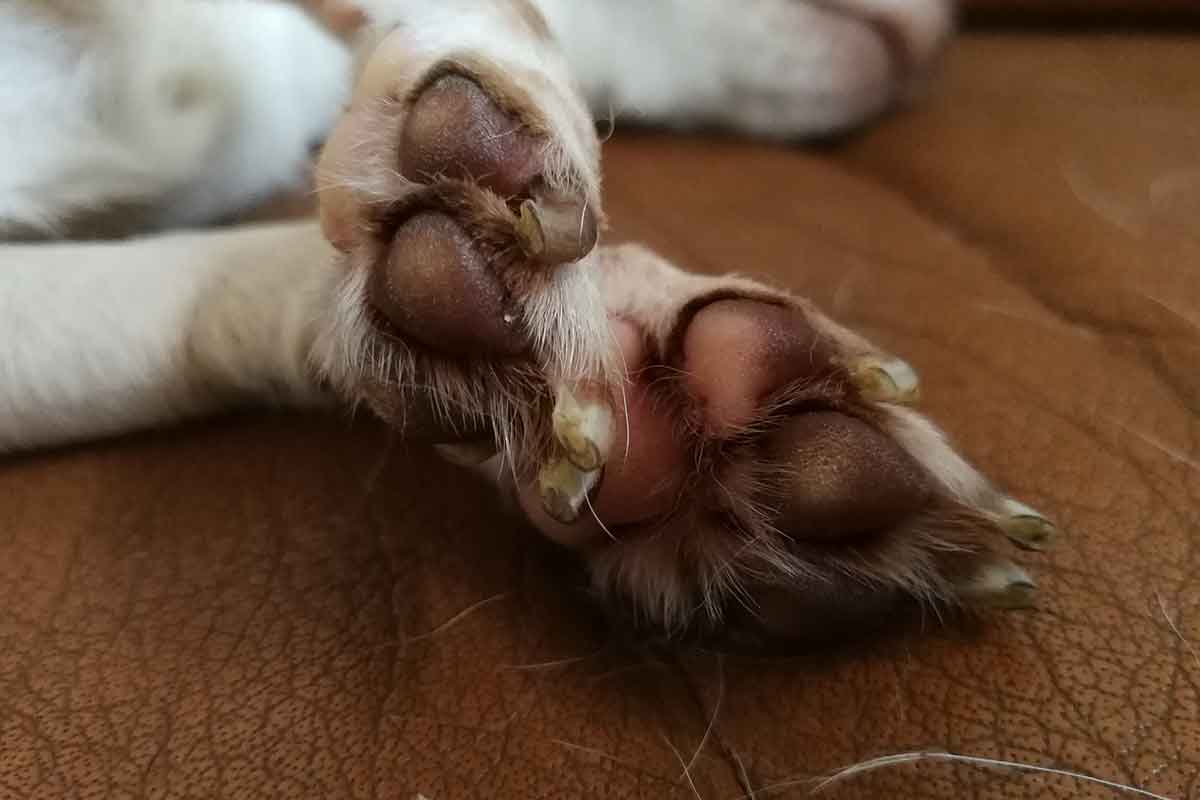Bones, my five-year-old English Shepherd, is an athlete. He twists, turns, dashes, and runs hard. He leaps, jumps, and climbs. While all this hard exercise keeps him physically fit and mentally happy, he is tough on his paws. Once in a while he’ll scrape a pad or come up with a cut on a paw, but more often he will split a toenail, break off a bit of nail, or worse yet, rip off a chunk of nail. The pain or discomfort from overlooked toe trauma can be stressful, so in my house canine toenail care happens daily.
Regular Inspections Are Important
Bones is stoic about injuries and doesn’t let me know when he has hurt himself, so I check his paws daily, usually in the evening. As I check each paw I look at each pad, between the pads, and I look at each toenail, checking for cracks, splits, or breaks. By checking each paw closely, I can find a problem and do something about it before it potentially gets worse.
What’s more important, by handling his paws every day, it becomes routine. He’s not worried or anxious, he’s not fearful, he doesn’t think something terrible is going to happen. That makes it easier to find and care for possible injuries.
Cracked, Split, and Torn Nails
Many surfaces can damage your dog’s toenails, including concrete, rocks, snow, and ice. An athletic dog like Bones, who puts pressure on his nails, is going to hurt them once in a while.
A nail that is slightly cracked or torn can often be trimmed. This makes it more even and less likely to catch on something.
Any time there is a crack or break that goes into the quick, however, I take Bones to our veterinarian. If the quick is broached, it’s not only painful but also leaves open the potential for infection.
When I spot a nail that needs veterinary care, I clean it first, getting rid of the dirt, ice, road salt, or other potential problems. After drying the paw, I put several layers of gauze around the broken nail to cushion it, and then wrap the paw in vet wrap or cling wrap to hold the gauze in place. Make sure the wrap isn’t too tight; you don’t want to cut off the circulation to your dog’s paw. Then see your veterinarian.
If your dog regularly faces situations that cause injury to his paws or nails, consider getting him some dog boots. Many online dog supply stores carry booties for dogs. They can provide guidance on choosing the right style and size.
Use good training techniques to teach your dog to wear boots. Take it slow, offer treats and praise for cooperation, and start by asking him to wear it for only a few seconds at a time.
If at any time your dog growls, snaps, or otherwise shows distress as you inspect, trim, or care for his nails, stop what you’re doing and call your veterinarian. A torn or broken nail is painful. Don’t try to care for it yourself; get some help. Your dog will thank you for it.
This article was reviewed/edited by board-certified veterinary behaviorist Dr. Kenneth Martin and/or veterinary technician specialist in behavior Debbie Martin, LVT








